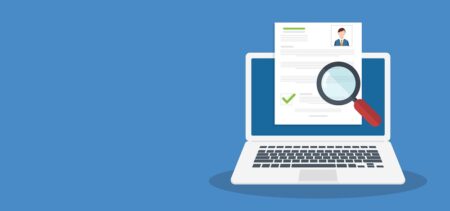The equilibrium between supervising staff and cherishing their privacy has never been more important, especially in this modern and busy world of business. Every aspect of the workday is now manageable through employ-oriented technology. There are numerous ways in which employee oversight can be done, ranging from tracking internet usage and emails to more invasive approaches like continuous video monitoring and keystroke recording by employers.
The role of the article is to look beyond the horizons of the ethical boundaries of monitoring employees. The reasons companies monitor their employees, the tools that are at their disposal, and the effects they could have on staff’s trust and morale will all become clear. In order to establish a relationship at a place of work that is both fruitful and full of respect, an organization has to know how far it should go and also where to draw the line.
Types of Monitoring Tools
Computer Software and Email Surveillance
Tracking how employees use computers and read their emails is implemented in many workplaces where software is installed to do this. The software tracks the applications being used and their usage periods, besides monitoring all incoming and outgoing emails for compliance with the company’s policy.
Video Surveillance and Biometric Tracking
Video cameras are commonly used in workplaces to monitor employee activity, enhance security, and protect against theft. Biometric tracking goes a step further by using technology like fingerprint and retinal scans not only for secure access but also to monitor time and attendance more accurately.
GPS and Location Tracking
For roles that involve travel or fieldwork, employers may use GPS tracking to monitor the location of company vehicles or smartphones. This ensures that employees are where they should be during work hours and helps in managing logistics and productivity.
Reasons for Monitoring
Enhancing Productivity
One of the main reasons why employers observe their workers is to make sure they are making the most of their time so as to avoid wastage. The goal of monitoring is to pinpoint areas where employees may be slacking off on their duties and provide the necessary guidance in order to make them more productive again; this way, it enhances productivity levels.
Protecting Company Assets
Monitoring also helps in protecting against unauthorized or harmful use of company resources. For instance, ensuring that sensitive information is not sent outside the company or that equipment is used correctly and safely.
Ensuring Compliance and Security
In industries where compliance with legal standards is crucial, monitoring can help ensure that employees follow laws and regulations. It’s also vital for security purposes, like preventing data breaches and other security threats.
Ethical Considerations in Employee Monitoring
The crossover between employee surveillance and privacy is rather subtle and complicated. Employers have to strike a balance between overseeing what goes on at the office and respecting the individual lives of their workers. This proportionality is not only a moral issue, but also a legal one given the existence of laws that govern what is permissible for workplace surveillance. In other words, some regions permit bosses to check emails as well as online activity without informing their staff. Understanding and adhering to these legal standards helps protect companies from lawsuits and maintains a transparent relationship with employees.
Consent and Transparency
Transparency plays a crucial role in ethical monitoring. It is important for employers to clearly inform employees about what is being monitored and why. This transparency helps in gaining employee consent, which is critical not only for legal reasons but also for fostering a climate of trust and openness in the workplace. When employees know what to expect and understand the reasons behind monitoring, they are more likely to see it as a fair practice rather than an invasion of privacy.
Fairness and Discrimination
A key ethical concern in employee monitoring is ensuring that the monitoring practices are fair and non-discriminatory. Monitoring should be applied uniformly across all employees to avoid any perception or reality of discrimination. Differential monitoring based on age, gender, ethnicity, or any other personal characteristic is unethical and can lead to significant negative impacts on morale and company culture. It’s crucial for monitoring policies to be designed and implemented in a way that treats all employees equally and fairly.
Surveillance in a Digital Era
Surveillance and monitoring can lead to complete crumbling of trust between management and staff. It is similar to always being watched, as it erodes trust and brings up suspicion among the employees. This results in weakening relationships with employers. Building an excellent work environment that minimizes the probability of misplaced trust will not only increase job satisfaction but also motivate the employees. Employees who are feeling ‘supervised’ all the time could still become highly stressed and anxious, which are not at all the traits of a productive work environment.
Productivity Paradox
In contrast, instead of doing the job it is intended to do, employee monitoring might even cause a decrease in productivity by too many watching eyes. This often occurs when the ongoing control of online activity distracts the personnel from the work or leads them to spend all their time complying with the protocols and rules rather than particular productive tasks. The stress and discomfort coming from tight monitoring will worsen cognitive function and bring in reduced creativity. These things will, in turn, affect the quality and volume of the work.
Best Practices for Ethical Monitoring
With organizations that are implementing monitoring policies, transparency is a key component and can be achieved. Hence, the policy is to be crafted such that the what, how, and why aspects of the monitoring are clearly and explicitly provided. In order for this policy to be effective, it needs not only to be well documented. It also needs to be easily accessible to all employees so they can review it.
Proposing employees as a stakeholder group in developing this monitoring policy makes it possible for everyone to respect and comply with it. Participation may be achieved by the choice of surveys, feedback sessions, or by establishing a representative committee that can voice the demands and suggestions of the community.
Using Data Responsibly
Data should be stored for no more time than strictly necessary to fulfill the specified purpose, and the information should be eliminated securely to prevent any unauthorized usage. A well-designed audit strategy with a procedure for regular checks and assurances on how data is handled would foster ethics and preserve employee confidence in the organization.
Complying with these standards will mean that organizations will make sure that functions are both efficiently influencing business objectives and employees are not pressed by their rights issues and privacy. This mixed strategy supports the construction of favorable work conditions in which both the employers and the employees are given the respect and security that they deserve.
Summary
With each technological advancement, employee surveillance will find ways to peek a little further and perceive much more than it can today. Applying AI and the latest machine learning methods may develop more advanced monitoring instruments. Moreover, ethical concerns and privacy protection will be more problematic as technological development progresses. Organizations should be careful to ensure that the ethical constraints of their tech capabilities are in place so as not to corner the trustworthiness and morale of the workplace.
Ethical rules of conduct in employee monitoring should be kept high when workplaces enter the digital world. Organizations may be called to develop a flourishing level of transparency and trust where monitoring acts are clearly conveyed and evenly implemented. Through writing out detailed policies, inviting the workers into this process, setting reasonable criteria, and sensibly managing the data, organizations can be confident that monitoring or online surveillance practices are in compliance with privacy codes.























